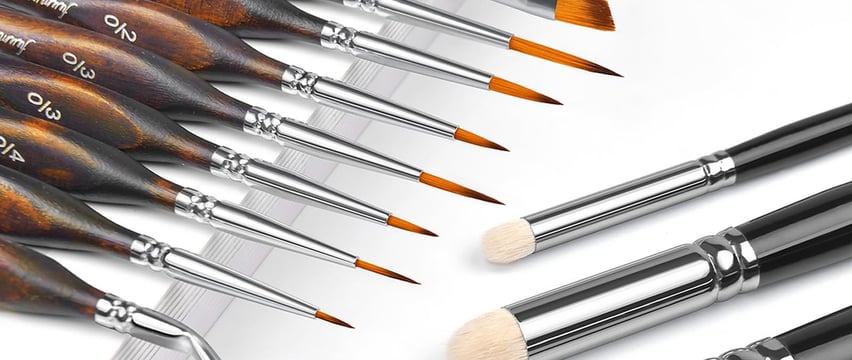Choosing the Right Paints and Brushes for Your Miniature Painting
This post offers guidance on selecting the ideal paints and brushes for miniature painting projects. It covers key considerations such as paint quality, type, and range selection, as well as brush size, shape, and maintenance. By providing practical advice and tips, the post aims to help readers enhance their miniature painting experience and achieve professional-looking results.


Selecting the right paints and brushes is essential for bringing your miniature creations to life. With a plethora of options available, navigating the world of miniature painting supplies can be daunting. In this guide, we'll explore how to choose the perfect paints and brushes to suit your project's needs and elevate your painting experience.
Choosing the Right Paints: When it comes to miniature painting, quality paints make all the difference. Opt for acrylic paints specifically formulated for miniature painting, as they offer vibrant colors, excellent flow, and quick drying times. Look for brands known for their consistency and quality, such as Vallejo, Citadel, Reaper and more. We currently use the Reaper Miniatures 'Master Paint Series' for the majority of our painting.
There are different types of paint including regular miniature acrylics, speed paints, washes and more. Consider the type of paint you need based on your project requirements. For detailed work, acrylic paints work best. For quick or larger projects like armies, it can be fun and fast to use speed paints in the Slap Chop method, article to come on this. Washes are great for adding detail but require some finesse.
Experiment with different paint ranges to find the ones that best suit your painting style and preferences. Some brands offer specialized ranges tailored to specific genres, such as fantasy, historical, or sci-fi miniatures, providing a wide selection of colors to choose from.
Selecting the Right Brushes: Investing in high-quality brushes is essential for achieving precise and professional-looking results in miniature painting. Look for brushes featuring fine bristles that hold their shape and provide excellent control. Synthetic options are cheaper but will not last as long - these are great for basecoating or for a beginner as you will need to learn how to use and take care of your brushes. Natural bristle brushes are the best and Kolinsky Sable are at the top of the list for me. Check out manufacturers like Windsor & Newton or Rosemary & Co.
Consider the size and shape of the brushes based on the scale and detail level of your miniatures. Fine-tipped brushes are ideal for intricate details and fine lines, while larger brushes are suitable for base coating and blending larger areas. I use a Windsor and Newton size 2 for most of my painting. Larger brushes are great for applying base coats and washes. Different shapes of brushes can be good to have, especially a flat or rounded one for dry brushing.
Maintaining Your Brushes: Proper brush care is crucial for preserving their longevity and performance. After each painting session, clean your brushes thoroughly with mild soap and water to remove paint residue and prevent bristles from drying out or becoming stiff. You can use a brush soap after cleaning to return the bristles to the perfect shape and keep your brush going as long as possible.
Store your brushes upright in a brush holder or container to protect the bristles and prevent them from bending or fraying. Avoid leaving brushes in water or solvents for extended periods, as this can damage the bristles and affect their performance.
By choosing suitable paints and brushes for your miniature painting projects, you can enhance your painting experience and achieve stunning results. Experiment with different brands, types, and sizes to find the ones that best suit your style and preferences. With the right supplies and techniques, you'll be well on your way to creating miniature masterpieces that showcase your creativity and skill. Happy painting!
